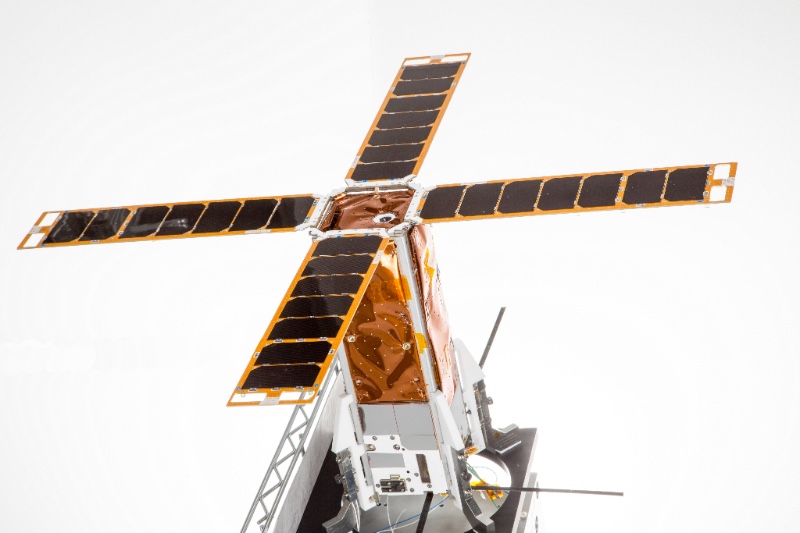
BEER-SHEVA, Israel (Press Release) — “BGUSAT,” the first nanosatellite for Israeli academic research, is being launched Wednesday, February 15 as part of a collaboration between Ben-Gurion University of the Negev (BGU), Israel Aerospace Industries (IAI) and the Israel Ministry of Science, Technology and Space. It will provide researchers with data on climate change, agricultural developments and other scientific phenomena.
The nanosatellite is slightly larger than a milk carton (4x4x12 inches) and weighs only 11 pounds.
“BGUSAT is an important and affordable new tool to facilitate space engineering and research,” says Prof. Dan Blumberg, BGU vice president and dean for research and development. “The reduced costs allow academia to assume a much more active role in the field, taking advantage of the innovation and initiative of researchers and students.”
BGUSAT is outfitted with visual and short wavelength infrared cameras. Hovering at 300 miles above the surface of the earth, the nanosatellite’s orbital path will enable BGU researchers to study a broad range of environmental phenomena. For example, they will be able to track atmospheric gases such as carbon dioxide (CO2) and study Earth’s airglow layer, which provides crucial information about climate change.
BGUSAT can change its angle and obtain views from multiple orbits and positions. Larger satellites orbit too high to accomplish this, while observation planes and balloons fly too low.
Seed funding to build the BGU satellite and its ground receiving station was provided by AABGU Boca Raton, Florida donors Max and Rachel Javit. “We’re so pleased to have helped Israel soar to new horizons by providing eyes in the sky,” says Rachel. “BGUSAT will provide valuable data for BGU and other Israeli academics that will benefit the scientific research community worldwide.”
BGU partnered with IAI and the Israel Space Agency within the Science Ministry five years ago. Construction of the satellite began two years ago at IAI’s space division. “Only a collaboration with government backing can preserve the Israeli space industry’s global standing, promote research, create new jobs, and safeguard the essential interests of Israel,” says Science Minister Ofir Akunis.
While developing BGUSAT, BGU students and researchers were challenged to conceive new methods of constructing a miniaturized satellite, working together to integrate knowledge from the software and electrical engineering, planetary sciences and industrial management fields.
“This is the first project to showcase the enhanced space engineering capability we are developing at BGU,” Blumberg says.
BGU’s Earth and Planetary Image Facility in the Department of Geography and Environmental Development is one of just five NASA Regional Planetary Image Facilities outside the U.S.
According to Avi Blasberger, director of the Israel Space Agency, “This is the first time Israeli researchers will have the opportunity to receive information directly from a blue and white [Israeli] satellite without having to go through other countries or research agencies.”
“We are proud to be part of this innovative, technological project, which opens up the world of nanosatellites to new and varied scientific missions,” says Col. (res.) Ofer Doron, head of IAI’s MBT Space Division. “For the first time, the space division developed a dedicated computer specifically for nanosatellites that has computing power similar to that of larger satellites. This computer has already been integrated into the SpaceIL spacecraft and the three Samson satellites.”
The BGUSAT nanosatellite will be launched from the Satish Dhawan launching pad in India.
*
Preceding provided by Ben-Gurion University